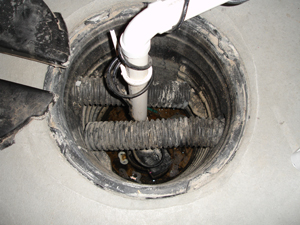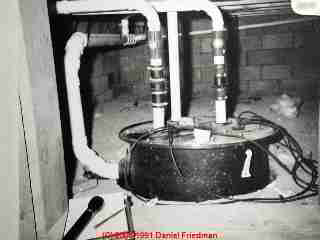
You should see two plugs connected and plugged into the same electrical outlet using what is called a “piggyback connection.” Unplug these from the electrical outlet, and try plugging in light to confirm that there is power going to the outlet. To check if the float switch is working or not, follow the electrical cords to the outlet. Because the float switch tends to stop working, this is often something that will need to be changed at least once or twice during the time you have your ejector pump. That is even something that the manufactures will warn buyers about. The float switch is a ball that will float on top of the sewage, and once the sewage level reaches a specific height, the ball triggers a sensor, and that makes your pump startup.įor some reason, the float switch doesn’t seem to last as long as the life of the ejector pump. Before you remove the pump always make sure that your pump is unplugged and doesn’t have power going to the unit.įloat Switch – If you have two cables coming out of the basin, then you have a float switch. To find out if your pump is clogged, you will need to raise the ejector pump out of the basin and check the bottom impellor area to see if anything got caught inside. The ejector pump has a hard time breaking those up, so they normally tend to get caught and block the sewage from being pumped out. A clog typically happens when objects such as baby wipes or feminine products get flushed down the toilet. If the light doesn’t turn on, there is no power going to that outlet.Ĭlog – If your ejector pump is running, but it is not pumping out any sewage waste from the basin, then this could mean that you have a clog in the impeller of the ejector pump. Pull the plug out and plug in something such as a light that you know should work. To verify if the plug is working, you will need to follow the power cord from the ejector pump and see where it is plugged in. No Power– Sometimes the outlet could have tripped a breaker, and this is why the ejector pump is not working. A plumber would typically charge you anywhere from $200 to $250 to solve the same problem you can figure out easy on your own.īelow are some of the most common reasons for your ejector pump to stop working. There are a few reasons why an ejector pump would stop working, and luckily most of the problems can be troubleshot yourself without having to call a plumber. Most Common Reasons Why An Ejector Pump Stops Working As a homeowner with an ejector pump, I can say that it is never fun when you hear this alarm go off.

Most ejector pumps have an alarm that will sound if there is a problem with the pump that needs your immediate attention. Often these switches will wear out long before the ejector pump does. The float switch is used to control the height of the sewage waste within the basin (or pit which people often call it). The most common reason why an ejector pump would stop working is because of the float switch. When this pump stops working, you could have one nasty mess to clean up. Call us today at (717) 786-2188 to schedule your ejector pump maintenance.Next to the sump pump in your basement, one of the most important pumps you might have is the ejector pump that is used to remove sewage waste. Below are some of the best that we install. has the expertise to service, repair and replace ejector pumps.

Regular maintenance is critical to keeping these pumps in good working order providing reliable service. If you have a sewer ejector pump in your home, you definitely want to keep it in good working order! This pump ensures that everything you flush down the toilet or down the drain gets pumped out of the house and into the sewer or septic line. From there it is pumped to the sewer or septic tank. The waste water is then pumped up and out of the basin and to ground level.

Similar to a sump pump, when waste water levels in the pit reach a certain height, a float is tripped. Sewage ejector systems are intended to sit in their own sump pit and should be kept away from your normal waste water sump pit. The top of the sump pit will be sealed so that no waste or odors can seep out of the basin. With a sewage ejector pump, a vent needs to be installed to run from the sump pump through the room. There is a key distinction between sewage ejection systems and waste water sump pumps – a vent. They are typically installed in basements and are part of a larger system designed to pump both liquids and solids. Sewage ejector systems are used when a laundry room, bathroom, or other plumbing fixture is installed below the main septic or sewer line grade.


 0 kommentar(er)
0 kommentar(er)
